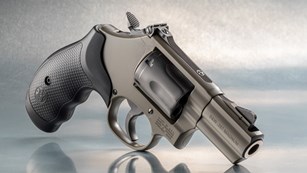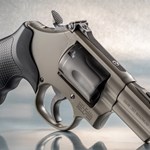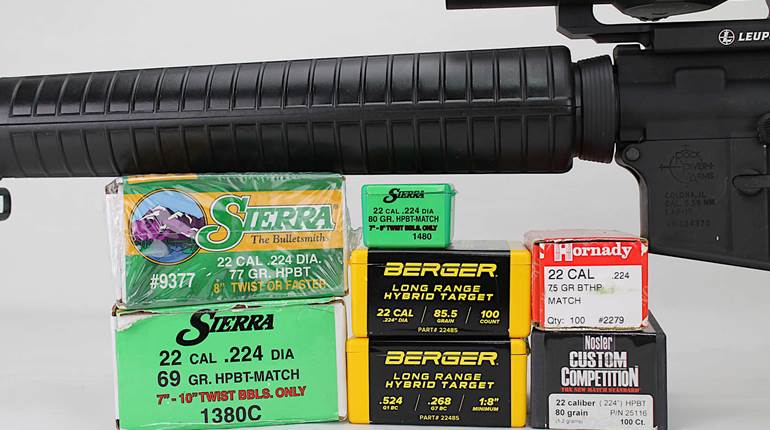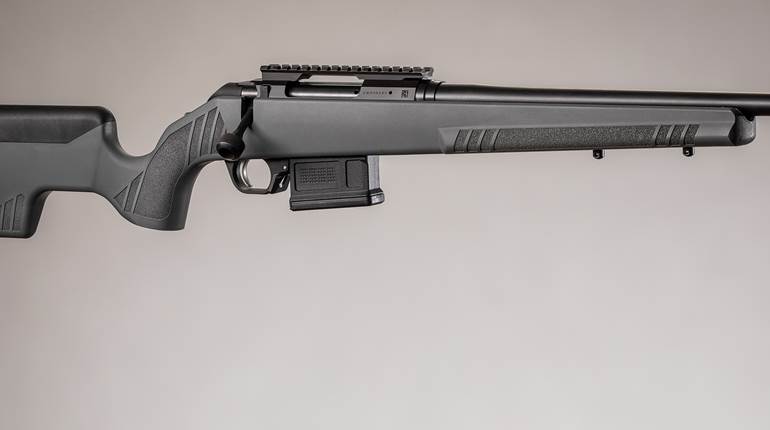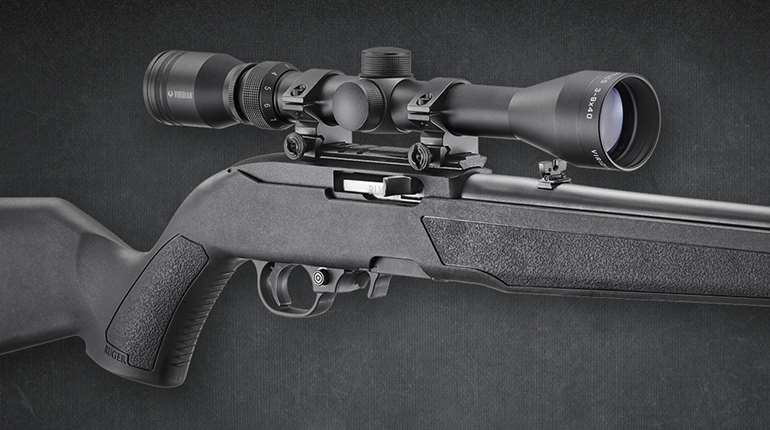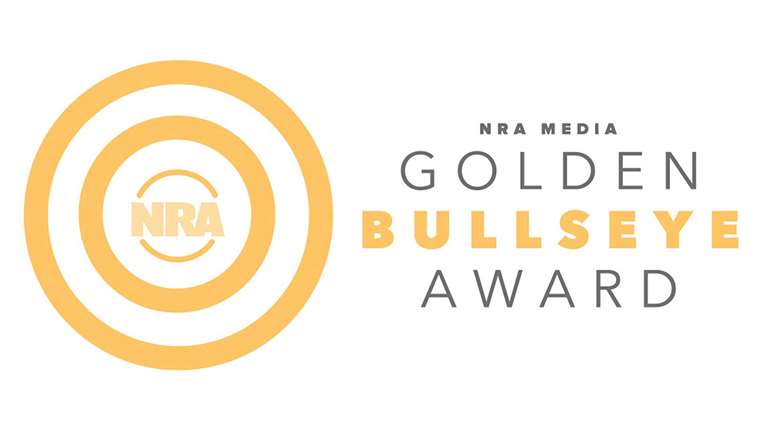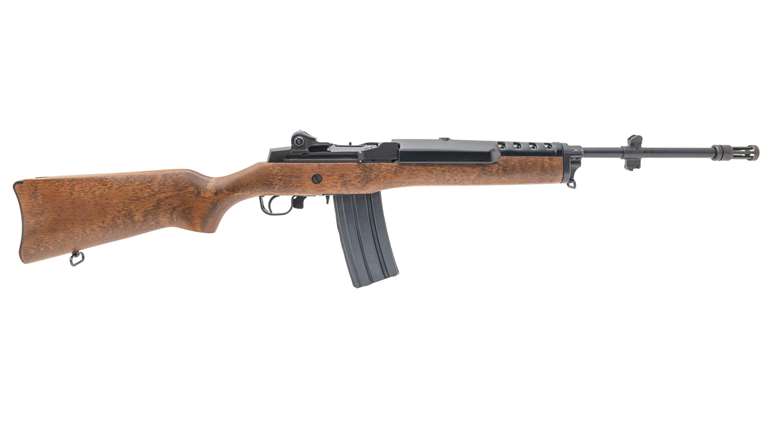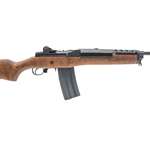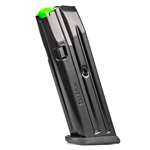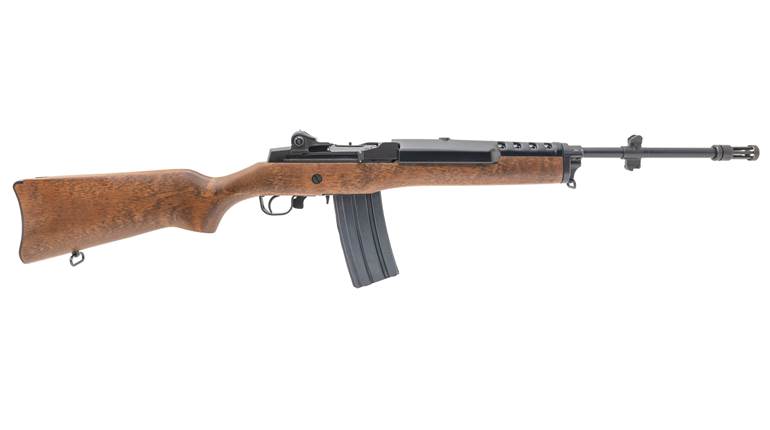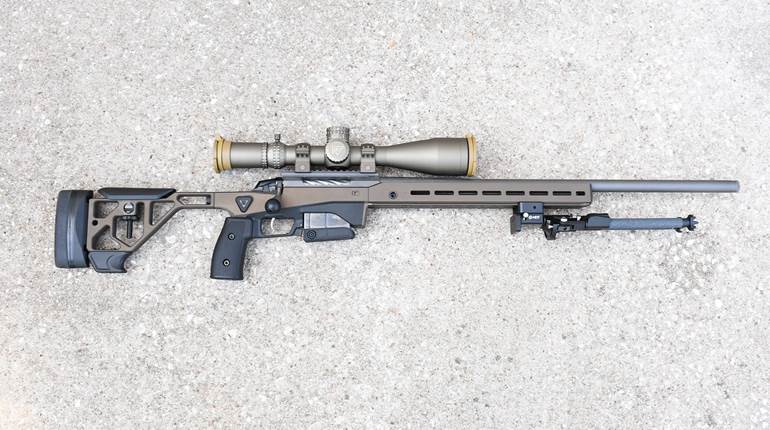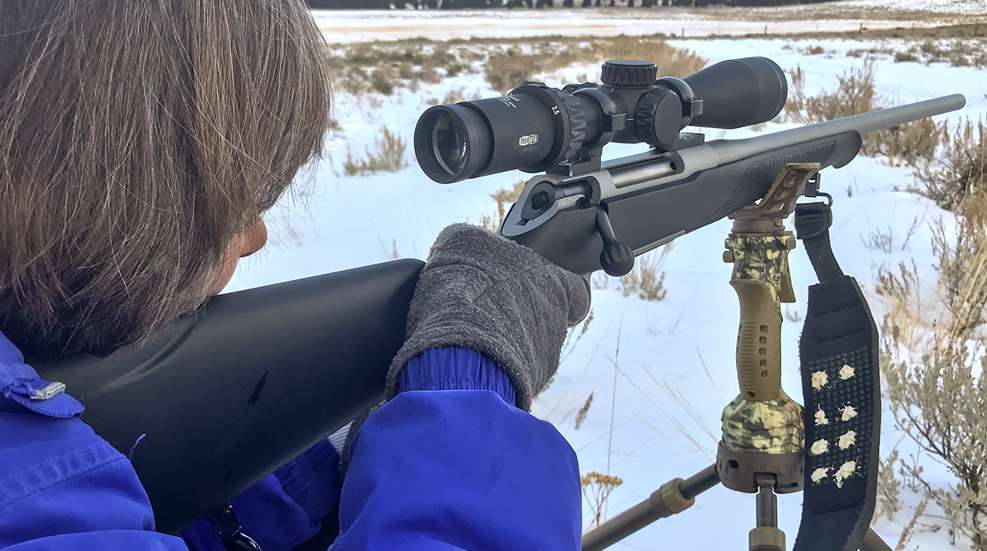
During the past few years, multiple new cartridges have been introduced as the be-all and end-all for the shooting sports. But experienced folks yawn at the hype and continue hunting and shooting as they have for years on end with their trusty .308 Win. rifles in hand—and the chambering remains one of the most popular centerfire rifle cartridges as a result. Every rifle shoots its best when paired with certain propellant and bullet combinations, and, for a handloader, finding an accurate recipe for the .308 is quite easy because of the balance of the cartridge’s bore diameter to case capacity.
In recent years, I’ve shot seven rifles chambered in .308 Win.—one an autoloader and six bolt-actions wearing sporter-weight barrels. Rifles typically shoot some factory loads and handloads better than others, and while all the rifles showed this tendency, it wasn’t by a lot. What’s noteworthy is that the seven rifles together averaged 1.29" firing somewhat more than 100 three- and five-shot groups at 100 yards from a bench. The Sauer 100 Classic XT rifle shot to compile the results in the accompanying table showed that same tendency shooting three jacketed bullets and one cast bullet.
Thumbing through handloading manuals published by five different propellant manufacturers, I counted 40 propellants listed for loading just 150-grain bullets in the .308 Win. I attempted to count all the different types of .30-cal. bullets suitable for the .308 that weigh between 100 and 220 grains, but my head started to hurt, so I quit.
Bullets
Bullet options for the .308 Win. are numerous and vary from 100 grains on the light side to 220 grains on the heavy end. A 100- or 125-grain bullet fired with an optimistic muzzle velocity of 3,200 f.p.s. produces a relatively flat trajectory a few steps past 300 yards. However, at that speed, the lightweight bullets rip holes in a coyote’s hide that even Singer cannot mend. Recoil is fairly light, but it still adds up, and firing 20 or so shots at varmints is enough fun throughout a day. These light bullets fired at a slower velocity do make a great practice round. A skinny shoulder will appreciate the light kick from Sierra 125-grain ProHunter bullets fired by 42.0 grains of H322.
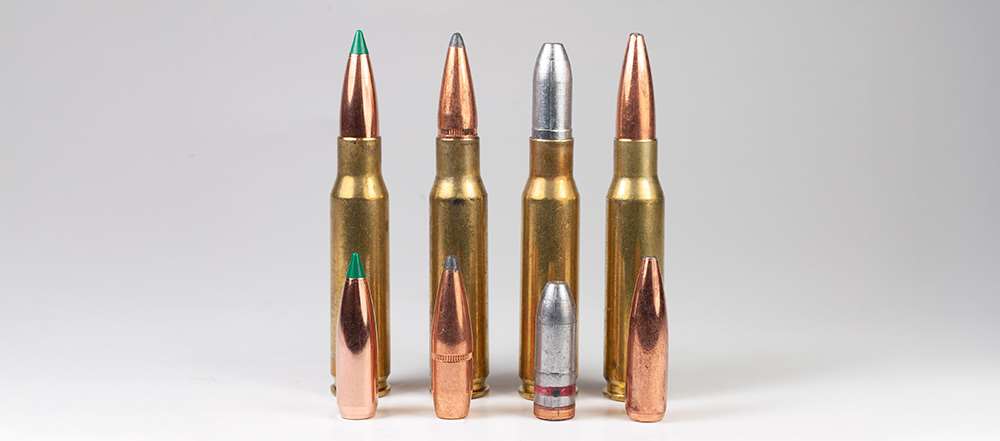
Projectiles weighing 150 and 165 grains are the bread-and-butter of bullets for the .308 Win. when hunting big game. I’ve had good luck shooting .308 bullets of regular construction in those weights to take antelope, deer, elk and feral hogs from 100 to 250 yards. Differences in bullet performance between these two weights was indiscernible on those animals. Because 150s start out 200 f.p.s. faster than 165s, they do drop about 8" less at 500 yards than the heavier bullets. In fact, the .308 Win. firing Nosler 150-grain Ballistic Tip bullets with a muzzle velocity of 2,900 f.p.s. drop 6" less at 500 yards than a 140-grain Ballistic Tip fired at a plausible 2,700 f.p.s. from a 6.5 mm Creedmoor.
My youngest son used to think that only the flattest-shooting cartridges were suitable for hunting antelope. On an October morning early in antelope season, I handed him a Winchester Model 70 chambered in .308 Win. He turned his nose up at the stubby .308 cartridges as he loaded them into the rifle’s magazine. The rounds were loaded with 150-grain bullets at a muzzle velocity a touch under 2,900 f.p.s. I told Thomas to aim right on a buck at distances out to 300 yards and to place the crosshairs so that there was just a sliver of light above the buck’s back at 350 yards.
Off he hiked across the prairie. He peeked over the top of a ridge and quickly ducked down; he then started traveling in a loop that took him out of sight down a draw. After some time, a shot sounded, and I eventually found him kneeling next to a buck. Thomas said he had crawled to within 275 yards of the buck, according to his rangefinder, aimed right behind the buck’s shoulder and fired. He admitted he had seldom shot antelope much farther, and the .308 Win. certainly shot flat enough for about any shot he might take at antelope.
Repeatedly we’re told 180-grain bullets overextend the .308’s ability to fire at a usable velocity. The Sauer 100’s 22" barrel fired Fusion 180-grain bullets at 2,658 f.p.s., which is within 100 f.p.s. of what the .30-’06 Sprg. fires with that same weight of bullet.
The speed of the .308 Win. firing 180-grain bullets creates a perfect recipe for large game in the timber and really any normal distance. Bullets of regular construction in that weight remain intact to penetrate on less-than-ideal broadside shots, so there is really no need to shoot costly controlled-expansion bullets.
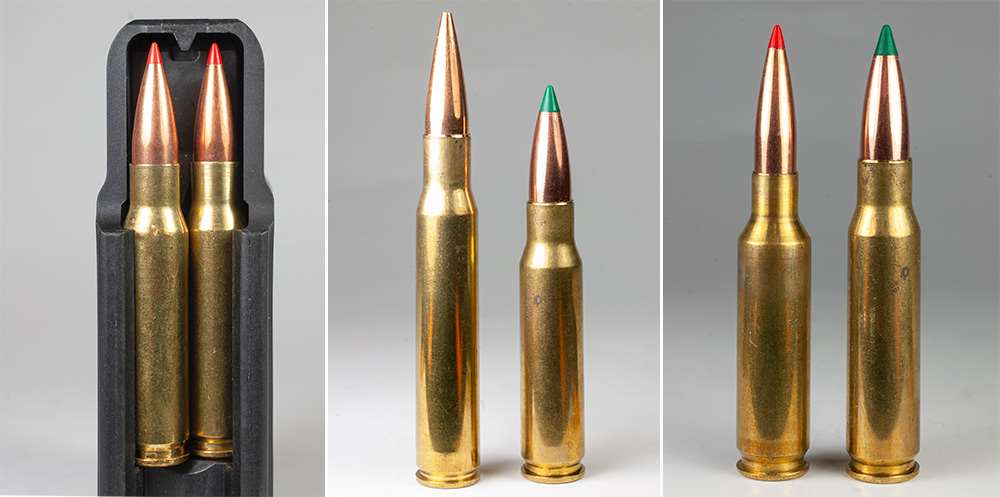
Speaking of expensive, the ever-increasing cost of handloading components makes cast lead-alloy bullets more appealing every day; commercial cast bullets with a gas check cost between 20 to 40 cents apiece. In addition to saving money, a satisfaction comes from casting projectiles by your own hand and knowing that a supply of bullets is always as close as your lead furnace and mold.
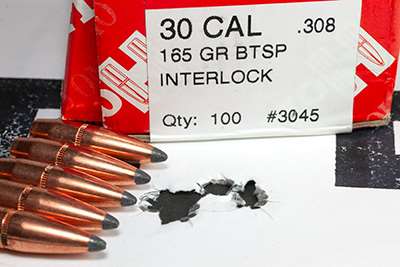
The RCBS bullet listed in the load chart was cast of old-style wheel weights. They are increasingly difficult to find, as lead is largely recycled these days. Scrounging lead alloy while dumpster-diving and rummaging through yard sales becomes its own economic reward. My best yard sale find was a 20-lb. ingot of linotype. The lady tending the sale said her husband had used it for years as a boat anchor, and she was happy to see it sail on down the road for a dollar.
Propellants
Cast bullets also save money on propellants. The 13.0 grains of Unique listed in the load chart yields 538 loads per pound of powder. The Unique charge only fills about a third of the propellant space in a .308 Win. case. You’d think standard deviation of velocity would be rather high with the propellant positioned here and there when it’s fired, however, the observed standard deviation was only 26 f.p.s. across 10 shots. The 29.0 grains of IMR 3031 listed in the chart filled a .308 case slightly more than half full and its Sd was 29 f.p.s.
How the relatively soft bullets respond to propellant pressure, though, is the most important factor in cast-bullet accuracy. At speeds up around 1,600 f.p.s., relatively fast-burning powders such as Unique develop sufficient pressure that bullets obturate in the bore to form a tight gas seal. At speeds approaching 2,000 f.p.s., slower-burning propellants, such as IMR 3031, develop much lower pressures to prevent bullets from deforming. The RCBS bullet loaded with 13.0 grains of Unique averaged 2.03" firing three, five-shot groups with a muzzle velocity of 1,644 f.p.s. The combination of the RCBS bullet and 29.0 grains of IMR 3031 registered a muzzle velocity of 1,752 f.p.s. and a 1.56" average for three groups.

So, where should you start when picking propellants? The .308 Win. performs best when shooting jacketed bullets matched with propellants with a medium-burn rate such as H322 on the fast end to Reloder 17 on the slow side. Both IMR and H4895 have been standard propellants for years on end, while CFE 223 and Power Pro 2000-MR deliver the highest velocities. TAC and Varget are close behind in speed, with excellent accuracy; combing through some of my handloading records for various .308 rifles, group sizes averaged 0.83" when using TAC, while Varget averaged 0.94".
Those two propellants continued that good accuracy when shooting the Nosler Ballistic Tip and Hornady InterLock bullets listed in the load table. The first five-shot group measured 0.64" fired with the TAC/Ballistic Tip load from the Sauer rifle. The Varget/InterLock was close behind with a 0.77" group. Standard deviation was 13 f.p.s. across 10 shots for the TAC load. That’s noteworthy, as each charge was not weighed, but dispensed from a powder measure directly into the .308 cases.
At the shooting range this past September, a boy was practicing with his .308 Win. rifle in preparation for his first deer-hunting season. Under the attentive eye of his father, the boy capably handled the gun, and all his bullets found the center of his target at 100 yards. When the boy was finished shooting, he checked his rifle and slipped it into its case. His smile said he was sure of his shooting ability and confident of his success with his .308 in hand.










